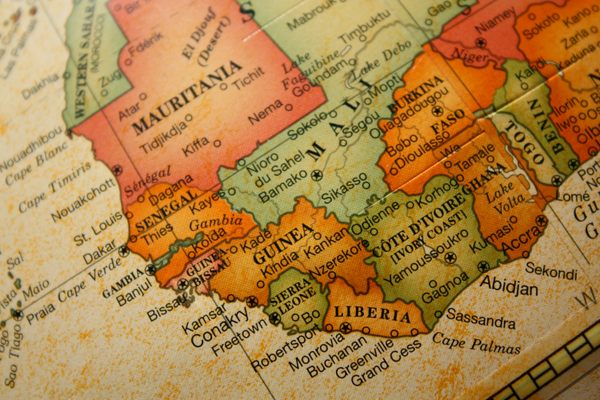Stupid Calculations: What if Instagram Pictures Were on Film?
An absurdist new column that pairs the ridiculous with math.

(All illustrations by Matt Lubchansky)
Stupid Calculations, a site for those inclined to wonder how many dried tears it takes to fill a salt shaker or how long it would take to sip an Olympic-sized pool through a straw. More columns can be seen here.
The frenzied photo sharing and self-esteem engine known as Instagram sucks in users’ time at a mind-boggling scale. According to the company, its fans upload an average of 80 million photos each day, putting it on target to rack up more than 29 billion a year. On a more immediate scale, this amounts to a dizzying 55,000 per minute or 926 blurring by every second.
For perspective, if each image was represented by a single penny lying flat (1.52mm thick), a stack would climb up at a rate of 83.6 meters every minute (274 feet). This is the height of a 27 floor building.
All of this represents a spectacular pyramid-building-like investment of human effort. But, with nostalgic visions of Kodak-addicted relatives running around throughout my childhood, I wondered how the level of Instagram involvement compares to the heyday of good ol’ 35 mm film.
The American film market reached an all-time high when roughly 800 million rolls were sold in 1999. The vast majority were 24 or 36 exposures, leaving us with an average of 30 per roll for a total of roughly 24 billion shots that year. That makes Instagram alone a repository of 5 billion more photos than were taken by everyone in the U.S. at peak film— 20 percent more. (International sales were higher but the data was too unreliable to use.)
Still, as impressive as this is, the intangibility and zero cost of digital picture taking pales next to the effort and expense people used to invest in 35 mm. They took the time to walk or drive to stores to buy it, shot it ever-so-preciously, and returned to stores once again to fork over even more money to get it processed. Cheap and easy it was not.
And so I wondered, what would it take to render a year’s worth of Instagram into film?
Conversion
As a reminder to those who may be foggy on the particulars, 35 mm refers to the distance between top and bottom of the film. The actual width of each frame is a somewhat confusing 36 mm with an additional 2 mm gap between frames (1mm on each side). This brings the total length of film required for each exposure to 38 mm. This number in hand, we start converting.

Per day
Instagram uploads: 80 million
80 million x 38 mm = 3,040,000,000 millimeters = 3,040,000 meters
This is 3,040 kilometers or 1,888.968 miles
Per week
Instagram uploads: 560 million
560 million x 38mm= 21.28 billion mm = 21280 km = 13,222.8 miles
Per month (average of 30.42 days)
Instagram uploads: 2.4336 billion
2.4336 billion x 38mm= 92,476,800,000 mm = 92476.8 = 57,462 miles
Per year
Instagram uploads: 29 billion
29 billion x 38mm= 1.102 trillion mm = 1,102,000 km = 684,751 miles
No such calculation would be complete without the obligatory times around the world fact. You will not be disappointed to learn that the Instagram film would be sufficient to wrap the Earth more than 27 times. I referred to the fantastically named National Geospatial-Intelligence Agency for a equatorial circumference of 24,901.461 miles. Satisfactory though this information may be, let us not be content with the conversion thus far.
The next step is the important matter of buying and developing all this film.
The Costs
While it’s possible to get cheaper rolls of film on a per-shot basis, the far lower cost of developing 36 exposures make it the no-brainer choice. Casting around for prices turns up a roll of Kodak GC/UltraMax 400 for $3.29. That’s less than a dime at $.0913 per shot.
Moving on to developing and printing, let’s go to the most readily available source these days: Walgreens. They charge $15.99 for a roll of 36, or 44.41666 cents per shot. If this sounds expensive, look around. Costco’s out of the game as is almost every other previously cheaper source. Nevertheless, accounting for inflation, it’s still less expensive than the ‘80s and ‘90s.
With the price of film coming in at 9.13 cents per shot and processing adding another 44.41666 cents, that brings the total to 53.5466 cents per shot.
Cost per day
80 million Instagram uploads @ 53.5466 cents = 4,283,728,000 cents or $42.83 million
Cost per week
560 million Instagrams @ 53.5466 cents = 29,986,096,000 cents or $299.86 million
Cost per month (average of 30.42 days)
2.4336 billion Instagram uploads @ 53.5466 cents = 130311005760 cents or $1.3 billion
Cost per year
29 billion Instagrams @ 53.5466 cents = 1563560720000 cents or $15.63 billion

Bonus
Difficult though it may be to obtain, how big a screen would we need in order to see 29 billion Instagram photos all at once?
Although Instagram unleashed different image sizes last year, the vast majority are still square and displayed on a phone with a screen the size about the size of an iPhone 5s. Not the newest, not the oldest. The real-world width of this screen—as opposed to pixels—is 51.7mm wide according to blueprints available on Apple’s developer site.
29 billion x 51.7 square mm = 1,499,300,000,000 square millimeters (about 1.5 trillion mm) = 1,499,300 kilometers
For the sake of easy math we’ll use an evenly proportioned screen. With the square root of the above number working out to a bit more than 1.22 million millimeters, the screen would need to stretch 1.224 kilometers high and wide (4,017 feet).







Follow us on Twitter to get the latest on the world's hidden wonders.
Like us on Facebook to get the latest on the world's hidden wonders.
Follow us on Twitter Like us on Facebook